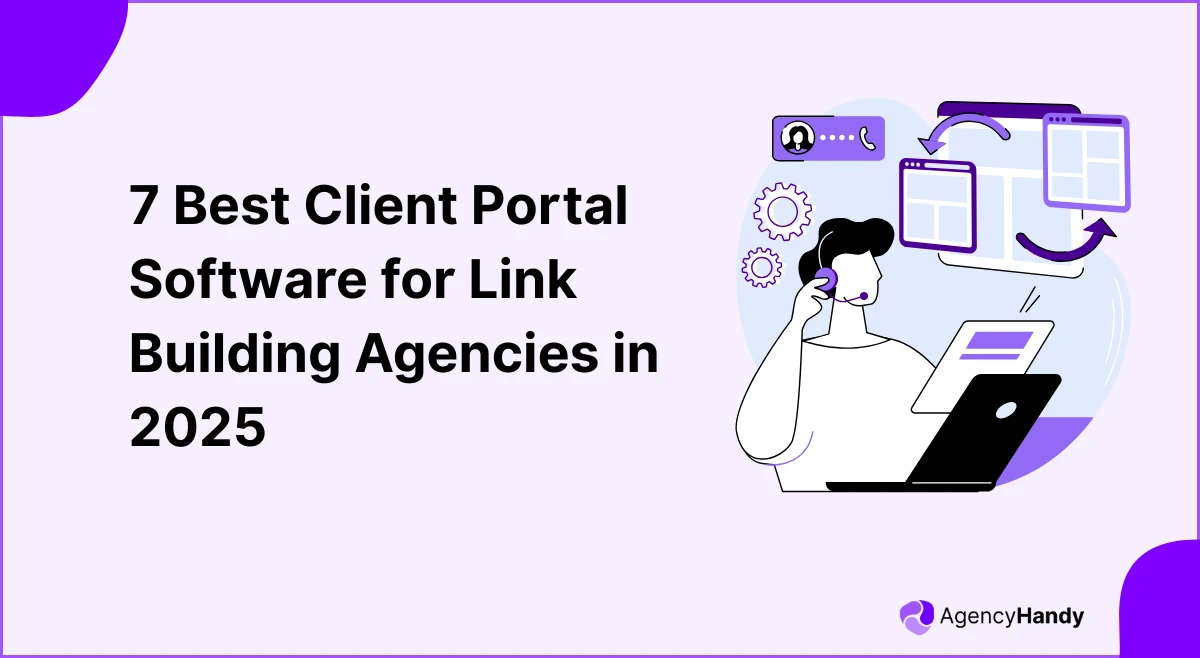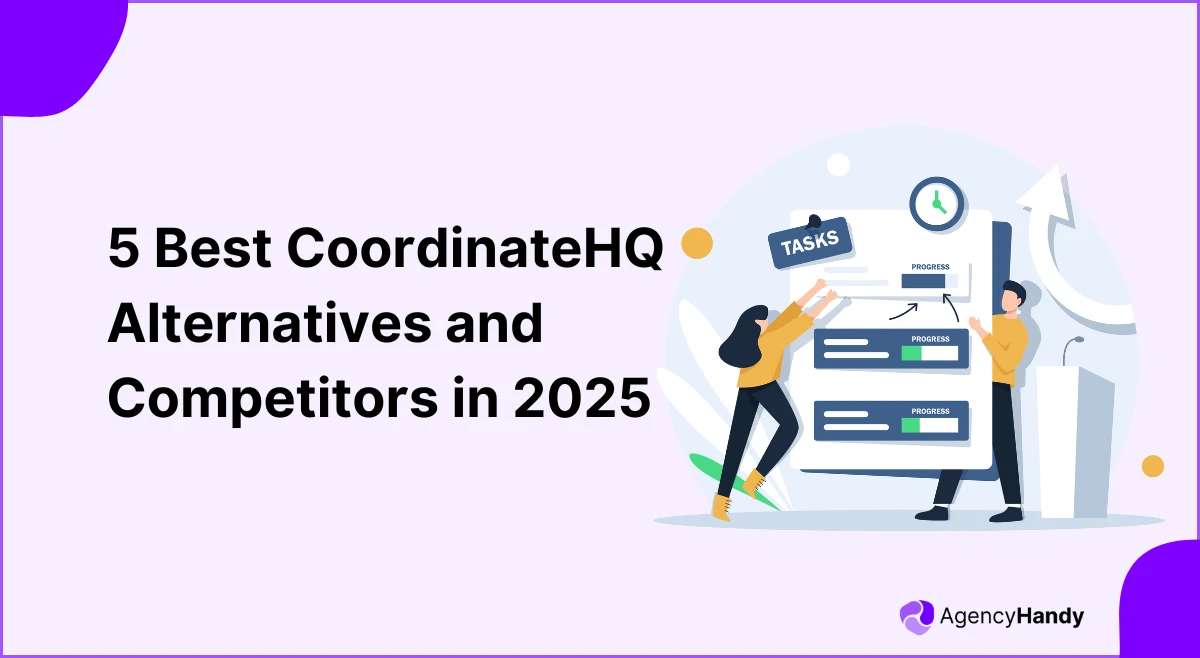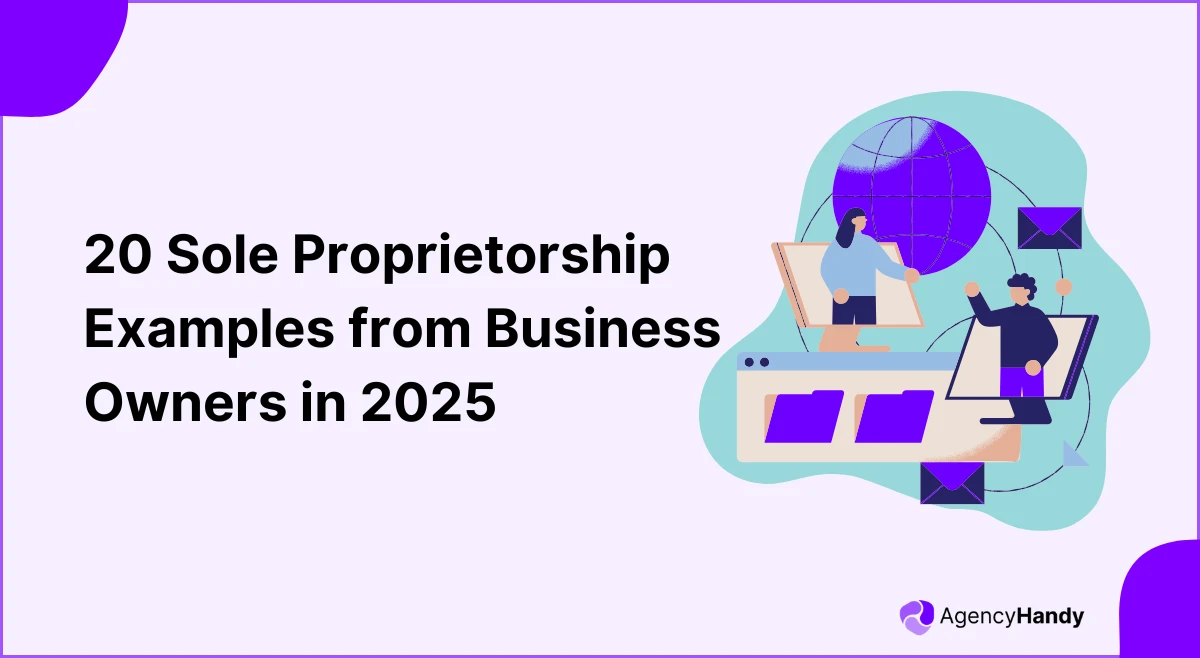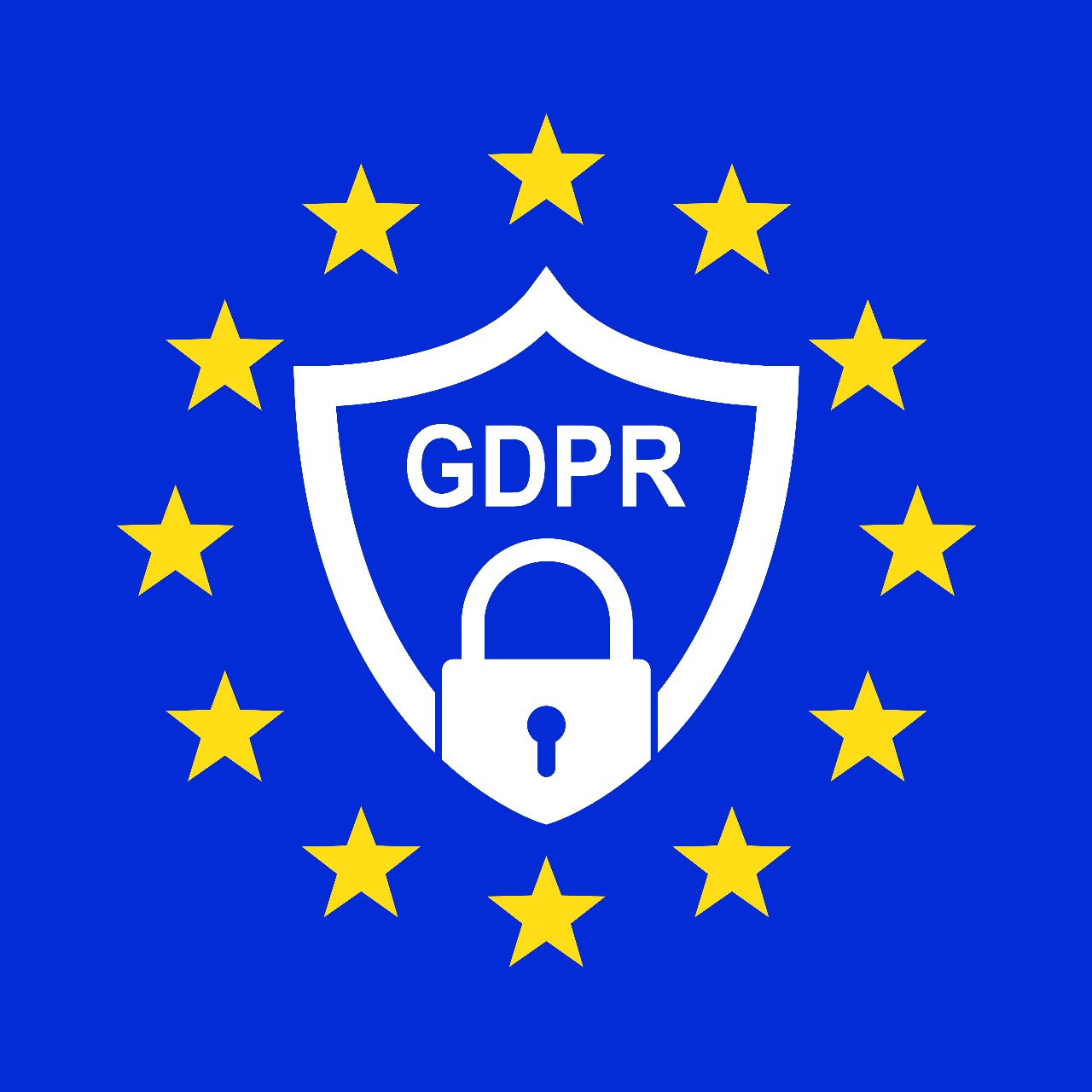We used to celebrate every signup until we realized many were gone by the next billing cycle. It hit hard!
You spend time, budget, energy to get them in… and then watch them walk. That’s when we stopped chasing growth and started focusing on subscription retention strategies.
The best retention strategies include smooth onboarding, flexible plans, self-service portals, dunning flows, loyalty perks, and proactive support. Each of them help to reduce churn, raise LTV, and drive lasting growth in your agency business.
So, let’s explore 10 subscription retention strategies that actually worked for us. Additionally, we’ll explore practical strategies used by top brands worldwide. These methods played a key role in making them industry leaders.
Quick Summary
- Keep customers engaged with flexible, self-serve, and personalized experiences. From smooth onboarding to behavior-based nudges and win-back flows.
- Losing subscribers drains cash, morale, and momentum. A small bump in retention (just 5%) can boost profits by 25% or more.
- Track retention rate, churn, CLTV, and NRR. These four metrics reveal whether your product holds attention, earns trust, and delivers lasting value.
Why is Subscription Retention Important?
In subscription SaaS, retention is everything. Without it, revenue leaks, CAC gets wasted, and growth becomes a treadmill. Here’s why every founder, marketer, and product team needs to make retention their main metric.
Churn Wastes CAC

Every customer costs time and money to win. But if they leave before you earn that back, you’re in the red. In 2023, B2B SaaS companies reported a median CAC payback of 17 months. So, if your customer churns after 12? That’s money lost.
What’s worse? Acquiring new customers is 5 to 25× more expensive than keeping the ones you already have (Northbeam). In a world where the subscription economy has grown by 435% over the past decade, you must focus on retention.
Retention Fuels Compounding Growth
Retention multiplies your returns. Customers who stay tend to expand by adding users, upgrading tiers, or buying more services. That’s how you reach net revenue retention (NRR) above 100%, where your existing base generates more revenue without any new signups.
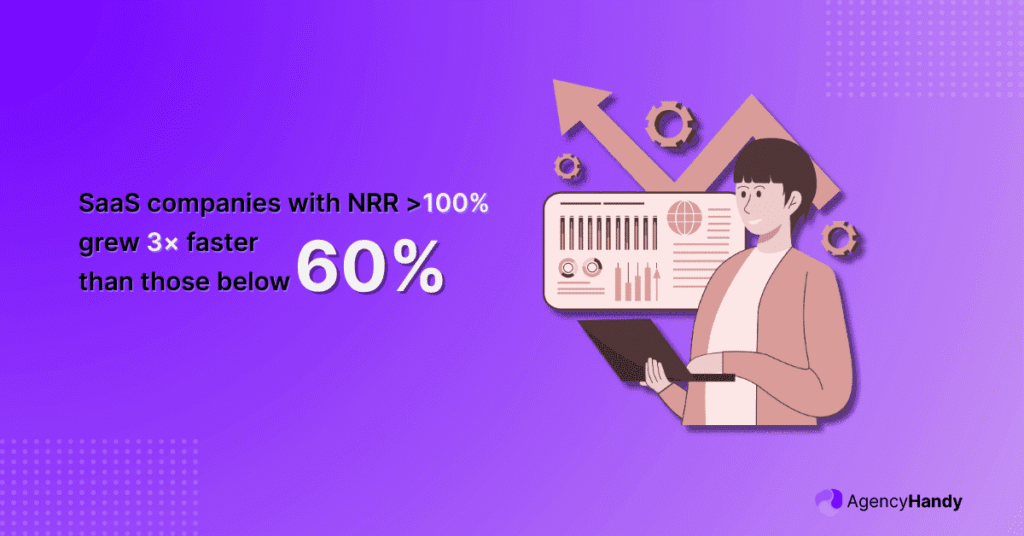
Take HubSpot. Their leadership once noted that with 110% NRR, “revenue would grow even without new customers.” And they’re not alone. A ChartMogul study showed SaaS companies with NRR >100% grew 3× faster than those below 60%.
It Supercharges Profitability

A Bain & Company study found that a mere 5% boost in retention can raise profit by 25% or more. Think about that: small improvements in churn reduction unlock big gains in LTV, efficiency, and even team morale.
And it makes sense. Long-term customers cost less to support, spend more over time, and often refer others. Every renewal is proof that your product still matters.
10 Best Subscription Retention Strategies to Reduce Churn and Increase LTV

In the early days of our SaaS business, we completely overlooked retention. It took some painful lessons to understand its value. On top of that, we had trouble finding effective methods to reduce cancellations.
That’s why we’re sharing the real subscription retention strategies examples that helped us retain more subscribers. If they worked for us, there’s a good chance they’ll help you as well.
1. Smooth Onboarding Experience
We’ve all been there—signing up for a product, poking around for five minutes, and closing the tab for good. Not because it was bad. Just because… we didn’t get it.
See, early churn often comes down to one thing: users don’t see the value fast enough. And whether you’re a SaaS founder or marketer, you need to fix that by tightening onboarding around three essentials —
- A useful welcome email that points to the first action. No fluff—just a clear next step.
- A focused product tour that highlights only what matters. Just enough to help users reach their first win, like sending a message or publishing a report.
- Gentle follow-ups like reminders and check-ins keep the momentum going.
The goal is to guide users from signup to success quickly before they lose interest. That’s where Agency Handy takes the lead. You can rebrand your services using your preferred colors, logos, and domain names. It also provides customizable intake and order forms to collect essential client details.
2. Self-Service Subscription Management
Too many users leave simply because they couldn’t manage things on their own. You’ve probably seen it too. Remember, customers want control. Not after three emails, or not after a support queue. They want it right now.
So here’s what we did and what I’d recommend you do as well —
- Let users pause, skip, or cancel their subscriptions without needing to email anyone.
- Give them the ability to swap a package or change the frequency when their needs change. Your portal should let them adjust without thinking twice.
- Make it easy to update payment methods. One expired card shouldn’t mean lost revenue.
Agency Handy’s billing and subscription management panel lets clients control everything in one place. They can change plans to update recurring payment methods, all with zero friction.
3. Flexible Plans and Billing Options
At one point, we started noticing a pattern.
Some customers weren’t canceling because they disliked the product. They left because their needs changed. Some of their months were busy, others slow.
One client wanted to space out deliveries. Another wanted to swap out a service without starting over. So, we had to solve that. And honestly, you probably do too.
- Start by moving away from rigid subscriptions. Offer tiered pricing, let customers adjust delivery frequency, and make product swaps simple. When people can downshift instead of canceling, they usually do.
- Give them options to pause, tweak, or update based on real usage.
- And when you build in feedback, not just collect it, retention stops being a battle. It becomes the byproduct of listening.
4. Dunning and Failed Payment Recovery
Some churn isn’t intentional. The report “The Impact of Subscription Models on Consumer Choice” analyzed six major subscription formats in retail. Interestingly, the findings showed that most customers have two or more subscriptions at the same time.
In that case, a card might expire, a payment might fail, or the customer might get busy. That’s how you lose recurring revenue without ever hearing a “no.”
So, what should you do? Move to automate the recovery process.
- Set up a dunning flow that automatically retries payments over a few days or even billing cycles.
- Add quiet nudges, such as personalized emails or SMS, to help customers fix things on their own quickly.
- Even better if you can spot the problem before it happens. Cards are about to expire, or there have been repeated declines. Give your team a heads-up and a way to act early.
That’s exactly why you should use Agency Handy. It offers different types of payment gateways, like Stripe, PayPal, Crypto, and bank transfers, branded invoicing, and automatic payment reminders. That way, you don’t need to reach out to your customers manually.
5. Win-Back Campaigns
Customers often leave when their priorities change. Budgets got tighter. Or maybe they just forgot why they signed up in the first place. That’s the moment you need a win-back system, not guesswork.
Step 1: Spot the Drift Early
Don’t wait six months to check if someone’s gone cold. If they haven’t logged in, paid, or interacted in a few weeks, they’re slipping. You need a setup that catches these signals early—canceled renewals, skipped payments, and silence.
Step 2: Understand the Exit
You must understand why your customer left!
Was it pricing? Poor support? Confusing UX? Dig into the data. Read their last ticket. Check the cancellation reason. Then write like a human.
Not “We miss you,” but “Here’s what we’ve fixed. Ready to give it another shot?”
Step 3: Nudge in the Right Places
Email still works, though SMS works faster. So, combine both. Plus, try a soft check-in now and a follow-up in a few days. One last CTA before they’re marked done. The key is rhythm.

According to Validity, almost 50% of people who receive a win-back email end up opening future messages from the company. So even if they don’t return immediately, you’re warming the inbox for later.
Step 4: Incentivize Without Bribing
Don’t spray coupons. Instead, offer something relevant. Maybe a feature unlock, or a plan with better fit. In fact, you can even give early access to something they asked for. Show that you’re not just selling, you’re listening.
Step 5: Automate for Real Life
Build simple flows.
- One for users who cancel after week 4.
- One for those who ghost after month 2.
- Set it, watch it run, and keep iterating.
- Test subject lines, and offers.
Learn what makes people come back and what doesn’t.
6. Behavior-Triggered Retention
Churn often begins quietly, like missed logins, skipped steps, or incomplete onboarding. We noticed this pattern early and built triggers around it.
Here’s what worked —
- Track early disengagement, including fewer sessions, abandoned tasks, or low feature usage.
- Segment users showing these signals and set up personalized nudges.
- Automate light interventions, for instance, friendly emails, helpful tooltips, or check-ins, not spam.
- Match triggers to real behaviors, not guesses. When someone skips a key milestone, that’s your cue.
What made the difference was timing and tone. Instead of shouting “come back,” we gently reminded them —
- “You’re close.”
- “Need help finishing this?”
- “Others like you tried this next.”
So, use behavior as your radar and act before it’s too late.
7. Personalized Loyalty Programs

Most loyalty programs don’t actually build loyalty. They’re bloated with points, perks, and punchlines that feel mass-produced. And surprisingly, 65% of customers ignore more than half of the loyalty programs they join.
That stat alone pushed us to rethink our whole approach. So, here’s what changed when we made personalization the core, not the afterthought —
- Generic doesn’t convert. If your message looks like it could’ve gone to anyone, it’ll get skipped like anything else in the inbox. But drop in a name, a recent purchase, a birthday, or even a local deal—they’ll feel seen.

- Personalization keeps people loyal repeatedly. When rewards align with real habits, like surprise perks, early access, or location-based deals, it creates a sense of connection. And 57% of consumers spend more with brands they’re loyal to. So the ROI’s obvious.
- Tiers work, but only if they feel earned. We built a layered system where deeper engagement unlocked better rewards. No gimmicks. Just value rising with commitment—things like free shipping, VIP invites, or priority help.
We also studied others. Take HuHot’s $9.99/month BOGO deal. One paid meal, one free, simple. But it tripled customer visits and drove 6x more spending from subscribers. That’s what happens when value is real, not performative.
8. Surprise-and-Delight Tactics
You and I both know, no one forgets a good surprise. Especially not a paying customer.
When a subscriber gets more than they expected, even a small unexpected gift or a thoughtful message, something shifts. They stop seeing your brand as just a service; instead, they start seeing it as a relationship.
In our setup, we had to rethink how we reward loyalty. It wasn’t about throwing discounts. It was about catching people off guard, of course, in a good way.
It could be a birthday email that actually feels human. Or a free upgrade that just shows up. These moments aren’t fluff.
Merkle’s 2021 report on brand loyalty says it best: surprise plus convenience builds emotional bonds. And emotional bonds? They keep your churn rate down and your LTV healthy.
9. Subscriber Experience Personalization
Here’s what we learned the hard way: a one-size-fits-all subscription experience doesn’t cut it anymore. Users expect more than just convenience, they expect to feel seen. And if you don’t deliver that? They leave
So, you have to build around behavior. That means reading into the signals —
- What does someone skip?
- What does someone reorder?
- What does someone pause?
- What does someone ignore?
Then, respond like a human, not a dashboard. Flexible plans, smart nudges, and well-timed perks can become the foundation of your retention strategy.
Harvard’s Elie Ofek put it plainly: “Companies should be worried about subscription fatigue.” And he’s right.
We saw it ourselves: fatigue creeps in when subscriptions feel repetitive. So our fix? Make every touchpoint feel intentional. Just give subtle shifts that show you’re paying attention.
- If someone always orders mid-month, you shift reminders.
- If they haven’t explored a feature, you surface it at just the right time.
This way, you’ll be able to keep your customers subscribed.
10. Proactive Customer Support
If you’ve ever lost a great customer without warning, you know the gut punch we’re talking about. We had to face that early. And for us, the issue wasn’t the product. Instead, it was the silence on the other end when they needed help.
So, it’s time to rebuild your support stack if you don’t want to lose a customer again. Here’s what can shift the needle —
- Be everywhere, not just anywhere. Some customers prefer to chat. Others lean on email or phone. We opened up all channels—and made sure everyone felt fast, human, and useful.
- Blend automation with a beating heart. Bots handle the busywork. But real service comes from people trained to listen, not just solve.
- Reach out first. Quiet users don’t always rage-quit; they just fade. So we set up triggers. Missed logins, abandoned carts, subtle drop-offs—those now spark check-ins, not silence.
- Coach your team in empathy. Support isn’t a script. Its presence. And presence keeps people around.
Remember, if churn hurts, support is your first fix. Agency Handy’s integrated support ticketing system helps you act before silence becomes churn. It allows you to assign tickets, track updates, and respond quickly, all from the client’s dashboard.
How to Measure Subscription Retention Success
When we started out, we were so focused on growth that we didn’t notice the quiet churn until it hurt.

Over time, we learned to track a few numbers that told us the truth. Not just if customers were staying but why. Here’s what we watch now, and how you can apply it.
1. Customer Retention Rate
This shows what percentage of your users stuck with you over a specific period.
Formula: Retention Rate = ((E − N) ÷ S) × 100
Where —
- S = Customers at the start
- E = Customers at the end
- N = New customers added during the period
Example:
We started a month with 1,000 users. Ended with 1,300. But 500 of those were new. So: ((1,300 − 500) ÷ 1,000) × 100 = 80%
Finally, 80% of our original users stayed. Not bad. But the 20% who left? That’s churn.
2. Churn Rate
This is the flip side how many people walked away (unsubscribed)
Formula: Churn Rate = (Customers Lost ÷ Customers at Start) × 100
Example:
We lost 200 out of 1,000 customers. So, (200 ÷ 1,000) × 100 = 20% churn. Now, that stings. Even small churn adds up fast.
3. Customer Lifetime Value (CLTV)
This tells you what each customer is worth over time. Higher CLTV usually means you’re doing something right.
Formula: CLTV = ARPU ÷ Churn Rate
Example:
- Our ARPU = $50/month
- Churn = 5% (or 0.05)
- CLTV = 50 ÷ 0.05 = $1,000
Every customer brings in about $1,000 before they leave. Drop churn to 2.5% and that doubles.
4. Net Revenue Retention (NRR)
This one helped us see the big picture, like how much revenue we’re keeping (and growing) from existing customers.
Formula: NRR = ((Start MRR + Expansion − Churn − Contraction) ÷ Start MRR) × 100
Example:
Start with $100K MRR → add $15K from upgrades → lose $5K from churn/downgrades. It means ((100 + 15 − 5) ÷ 100) × 100 = 110%.
That 110% meant we were growing without needing new signups. Huge!
Why It All Matters
You don’t need to obsess over dozens of metrics. But these four? They show you if customers are sticking, growing, or quietly disappearing.
Remember, high churn is expensive. It drains your cash, morale, and momentum. But when you improve retention, CLTV grows, NRR climbs, and you buy yourself breathing room.
So, track these, understand and act on them. Because in SaaS, retention is survival.
5 Subscription Retention Strategies Case Studies
There’s a theory. And then there’s what’s working in the market. If you’re building or fixing a subscription product, here are five customer retention case studies that didn’t just get customers in, but kept them coming back.
Let’s break down exactly how.
1. Adobe

Adobe didn’t just switch to subscriptions, they reshaped the way people think about software ownership. The 2012 move from boxed licenses to Creative Cloud sparked backlash, but over time, it turned into one of the boldest and most effective pivots in SaaS history.
What started as a risky bet ended up building loyalty, revenue, and product depth at scale. Let’s break down what actually changed.
Challenges
The backlash was loud. Long-time users didn’t love the idea of “renting” tools they used to own. Many feared ongoing fees, unreliable access, and losing control. Adobe faced
- Customer resistance: Creatives who had once paid once now faced recurring bills.
- Connectivity concerns: Some markets weren’t ready for cloud-based workflows.
- Trust issues: Users weren’t sure if the value would match the new costs.
Changes
Instead of pushing harder, Adobe listened. They softened the switch with:
- Transitional pricing for loyal users.
- Offline access for core tools like Photoshop and Illustrator.
- Added value like cloud storage, mobile app access, and faster updates.
Benefits
The payoff? Massive.
- Predictable revenue: Adobe’s income grew from $4.4B (2012) to $17.61B (2022).
- Reduced piracy: Cloud-only access cuts down illegal distribution.
- Faster innovation: Frequent feature releases replaced multi-year waits.
- Deeper customer insight: Always-on software meant Adobe could study real usage and improve accordingly.
2. Grammarly

Grammarly built a habit. Its rise as a daily-use writing tool shows how freemium products can win loyalty by delivering consistent, visible value. This case stands out because Grammarly slowly draws users in, making the product more engaging over time.
By offering useful features, a smooth user experience, and well-timed prompts, it turns free users into paying customers. Here’s how they faced the challenges, rolled out changes, and reaped the benefits.
Challenges
When Grammarly launched, it entered a crowded space where basic grammar checkers were already free. Convincing users to pay for writing help was a hard sell. Plus, creating trust in AI-generated suggestions posed its hurdles.
- Skepticism of AI: Early users were unsure if algorithms could genuinely improve writing beyond surface-level edits.
- Low perceived urgency: Writing assistants are seen as “nice to have,” not “must-have,” making upgrades optional for many users.
- Conversion gap: Many free-tier users stayed passive, requiring smarter nudges to leap premium.
- Privacy fears: Users hesitated to allow a browser extension or app to read sensitive emails or documents.
Changes
Grammarly made bold, practical changes to overcome inertia and build a clear bridge between free and paid value. Their playbook was built on product-led growth, user trust, and platform ubiquity.
- Tiered pricing model: Kept the entry barrier low with a free version while creating strong incentives (like tone detection and rewrite suggestions) to move up.
- Freemium onboarding path: Let users try it instantly, no credit card, then slowly introduce nudges to explore advanced tools.
- System-wide integration: Launched browser extensions, Office add-ins, and mobile keyboards to become unavoidable.
- Feature evolution: Added plagiarism checks, tone suggestions, and full-sentence rewrites that hit deeper writing needs.
- Weekly reports: Delivered personalized writing summaries, helping users feel tangible growth — a dopamine hit worth paying for.
Benefits
These changes didn’t just increase revenue, they created retention loops. Grammarly became a quiet, daily writing companion for millions, woven into their work routines.
- Massive reach: The free tier pulled in millions of users organically, 40 million active users as of 2025.
- Sticky user habits: By showing up in browsers, docs, and emails, Grammarly made itself indispensable.
- Reduced churn: Weekly usage reports and clear writing improvements gave users reason to stick around.
- Organic growth: Happy users brought others in. Word-of-mouth and visibility led to low acquisition costs.
- Trust through transparency: Commitment to privacy, clear permissions, and helpful support reassured users.
3. Netflix

If you’ve ever built a product that had to outgrow itself, Netflix will feel familiar. They didn’t just pivot from DVDs to digital, they rewired the engine mid-flight.
Today, they’re a retention machine with 300 million subscribers in 2024, trained to return week after week. But it didn’t come easily.
Challenges
Netflix’s streaming push came with real friction. Here’s what they had to sort out —
- Fierce Competition: With Disney+, HBO Max, and others grabbing attention, the fight for watch-time got expensive fast.
- Rising Content Costs: Producing originals and licensing global hits drove budgets through the roof.
- Saturated Markets: In the U.S. and Canada, new subscriber growth started hitting a wall.
- Churn Risk: Users are quick to cancel when price hikes or favorite shows disappear.
Changes
To stay sticky, Netflix rebuilt its playbook around attention and access. Key shifts:
- Made Their Hits: Originals like Stranger Things didn’t just entertain—they created FOMO.
- Smart Recommendations: Their algorithm became your digital concierge, always queuing up the next watch.
- Localized Content: With shows like Squid Game, they didn’t just go global, they went native.
- Device Ubiquity: Netflix made sure it worked on whatever screen you held.
Benefits
These moves weren’t just cosmetic, they became core to retention.
- Steady Recurring Revenue: Predictable monthly income replaced boom-bust DVD sales.
- Creative Control: Originals cut out licensing middlemen and built brand equity.
- Global Grip: Customized content + smart pricing helped win markets from Seoul to São Paulo.
- Habit Loops: Binge drops trained users to return, often, and stay longer.
4. Salesforce
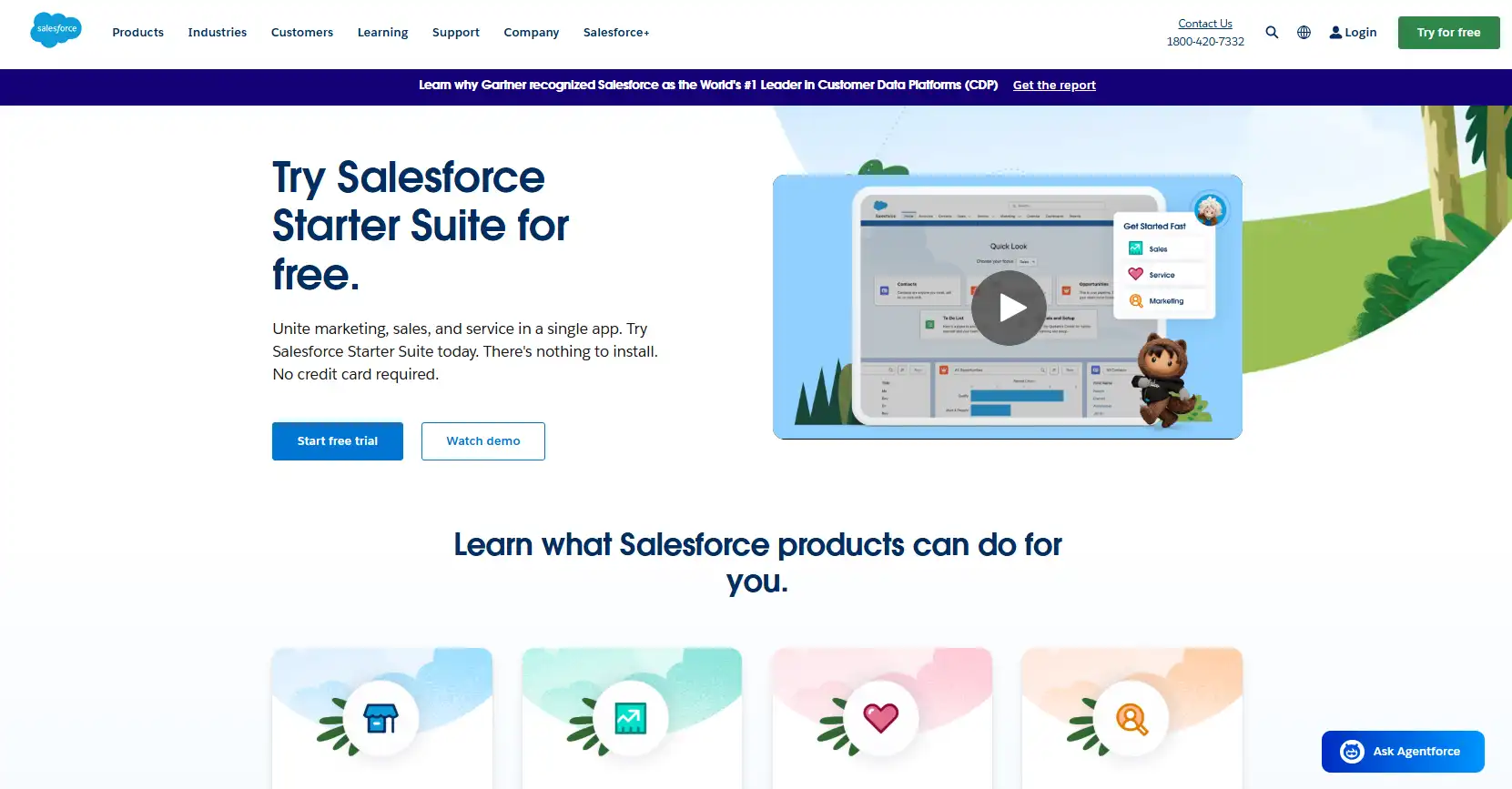
Instead of clunky installs, Salesforce offered CRM in the cloud. Just log in and go. It felt easy, even familiar. Like shopping on Amazon, but for your business. That simplicity hooked users early on and kept them coming back.
Let’s break down how Salesforce stayed close to its customers, tackled growing pains, and became a model for subscription loyalty.
Challenges
As Salesforce grew, so did the complexity, and not everyone kept up.
- Too Many Choices: With multiple product tiers, some customers weren’t sure what they really needed.
- Feature Overload: The expanding suite, like Marketing Cloud, Service Cloud, and more, sometimes overwhelmed smaller teams.
- Setup Struggles: Integrating Salesforce into daily work took more effort than expected, especially for non-tech users.
- Inconsistent Adoption: Not all team members used the platform equally, creating usage gaps.
- Surprise Costs: As businesses grew, usage-based pricing and upgrades caught some off guard.
Changes
Salesforce shifted its entire approach to support customers better, not just sell more.
- Real People Helping: Dedicated success managers guided teams, helped them get value, and flagged upsell opportunities that actually made sense.
- Start Small, Grow Easy: With tiered and usage-based plans, businesses could begin light and scale without pressure.
- Smarter Onboarding: Early training and simple wins made adoption easier from day one
- Cross-Sells That Fit: New tools weren’t pushed; they were offered when relevant, based on actual needs.
- Build Your Own Setup: The AppExchange gave users easy plug-ins, so they could make Salesforce fit like their own.
Benefits
These moves helped Salesforce build something rare: customer growth from inside the house.
- More Revenue from Existing Clients: In 2025, the company made $37.9 billion in revenue. This was a 9% increase compared to the previous year.
- Daily Habit: Teams relied on Salesforce like clockwork.
- Trust Earned Over Time: Ongoing support made customers feel seen, not just sold to.
- Growth Without Burnout: Salesforce didn’t need to chase new signups. Instead, they focused on keeping the ones they had.
5. Amazon

It started simple with fast and free shipping. That alone made people sign up. But Amazon didn’t stop there. They slowly turned Prime into a bundle built for everyday life.
Now, it’s beyond just delivery. It’s music, movies, books, groceries, and games, wrapped into one membership. The more you use it, the more it feels like something you can’t do without.
Challenges
Packing all of that into one subscription came with real trade-offs. Here’s what got in the way.
- Too Much to Track: Many users didn’t even realize how much was included.
- One-Trick Users: Some stuck to shipping, barely touching the other services. That made the subscription feel less valuable.
- Streaming Struggles: Prime Video had to fight for screen time against Netflix and Disney+.
- Limited Access: Groceries and same-day delivery weren’t available everywhere. That hurt consistency.
- Privacy Worries: As Amazon personalized everything, some customers grew wary of how their data was being used.
Changes
Amazon didn’t overhaul things overnight. They made small, smart tweaks that kept people engaged, without overwhelming them.
- Clearer Updates: They made perks more visible through emails, alerts, and app nudges.
- Smarter Suggestions: Prime Video started showing product links that fit the shows you were watching.
- Expanded Coverage: Grocery and game perks slowly rolled out to more areas.
- Prime Day Became a Hook: A once-a-year sale turned into a reason to stay subscribed—and spend more.
- Added Perks: New benefits like Prime Reading showed up without fanfare. Just extra value, no extra noise.
Benefits
These changes made Prime something more than a service. It became part of how people lived.
- More Use, Less Churn: The more features people touched, the less likely they were to leave.
- Big Spending Gap: Prime users spent over double what non-members did $1,400 vs. $600.
- Worldwide, Yet Personal: By 2020, Amazon’s Prime membership grew to 200 million paid users across the world. Just a year earlier, in 2019, the number stood at 150 million.

- Hyper-Personalized Journeys: Everything you watch or buy fine-tunes what Amazon shows you next.
- Hard to Leave: Once you’re deep in the Prime world, going elsewhere doesn’t feel worth it.
Final Words
When it comes to subscription retention strategies, if you’re early-stage, focus on fast onboarding and fixing failed payments. If you’re scaling, think loyalty, feedback loops, and support triggers.
Ask yourself: is it cheaper to keep or chase? Always go with the one that builds LTV over time. For lean teams, start with flexible billing, simple feedback tools, and behavioral nudges. No need to buy a toolkit built for giants.
Agency Handy helps you do this quietly through billing, workflows, and onboarding all in one place. If retention matters to you, it’s worth testing.
FAQs
What is subscription retention?
Subscription retention is the percentage of users who renew their plans after having the chance to do so. It shows how well your product keeps customers engaged and willing to pay again. High retention means high trust and long-term value.
What are the three R’s of customer retention?
The three R’s of customer retention—Rewards, Relevance, and Recognition—are loyalty pillars that drive long-term relationships. Offer real value, tailor rewards to customer needs, and make them feel seen, heard, and part of something special.
How do you convince customers to keep your subscription?
To keep customers subscribed, show them clear value through updates, perks, and features. Use email, social, or in-app messages to remind them why it matters. Also, add proof, like reviews, results, real stories to build trust and loyalty.




